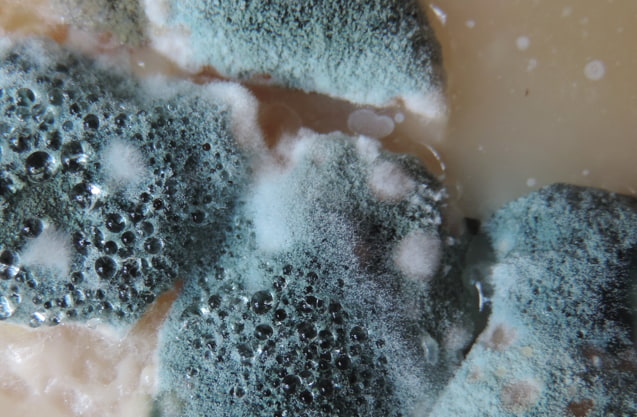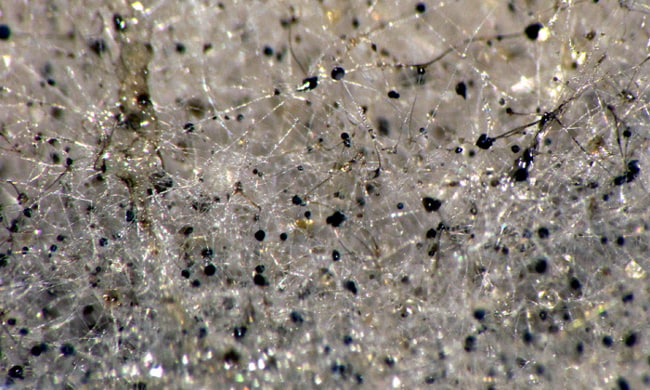There are more than 100,000 types of mold, and it can grow almost on every surface. Everyone knows mold needs moisture to grow, but whether mold can grow on water itself is an interesting question. Water can grow mold in a stagnant phase. Well water and water in treatment plants are more likely to grow mold because of the little water motion over there. Consuming moldy water deteriorates health, and you must know how to remove mold from your drinking water. It is estimated that 70% of U.S buildings have water damage that causes mold growth.
This article covers how mold gets into water, its symptoms, testing methods, and prevention techniques.

How Does Mold Get into Drinking Water
Mold can get into drinking water in countless ways. You need to check your mold source according to the given details.
- High levels of oxygen and organic food sources (such as filter paper cartridges) in your water system provide a suitable environment for mold growth.
- If your drinking water is sourced through a well and your well cap is damaged and not sealed, you are at higher risk of getting mold in your water.
- Mold growth can already be present in your water softener, water purifier, and water storage tank.
- A faucet aerator can have mold growth that transfers to your glass of water.
- Mold growth in water pipes is another way to get moldy water. Mineral buildup in water pipes is a great food source for molds. Besides this, water pipes’ damp and dark environment is a favorite substrate for molds. Moreover, if water pipes are cracked, mold can easily find its way to grow there.

Symptoms of Mold Growth in Drinking Water
Mold is a type of fungus that can be found on almost every surface, indoors and outdoors. There are certain signs and symptoms that are associated with mold growth. Black mold is the main culprit found in drinking water. Black mold generates mycotoxins that are responsible for allergies and respiratory issues in humans. Symptoms of black mold are much clearer than any other mold type. You will see black spores in water plants and utensils. Also, a greenish-black, irregular growth pattern will be visible in the water.
Apart from black mold, white mold is also present in moist places. White mold is also described as mildew. You can recognize white mold with a creamy white color. It grows in flat patterns and has a powdered texture. A foul odor is the most common sign of mold growth in any place. Mold growth also causes an irritating musty and earthy smell, especially for asthmatic patients. Consuming moldy water can affect human health in the following ways.
1. Boosts up allergies
2. Headaches
3. Skin rashes
4. Nose bleeding
5. Respiratory issues
Drinking moldy water in the long term can cause various diseases, including toxic mold syndrome, asthma, and Legionnaires disease.
How to Test for Mold Growth in Drinking Water?
Consuming moldy water once or more often is dangerous for human health. There isn’t any safe limit for mold growth in drinking water; even a small amount of mold growth in drinking water is hazardous. If you have doubts about your drinking water quality regarding mold, perform the following tests.
Smell and Taste Test
The musty, foul, and earthy smell coming from drinking water indicates there might be mold growth inside your water tank or water pipes. If the water tastes different than usual, you should confirm it with other family members. If all of the members confirm a changed water taste with an unpleasant smell, you must take your drinking water for lab testing.
Note: If the mold contamination level is low in the water, you may not feel any smell. Thus, this test doesn’t provide you with accurate results.
Visual Testing
In the case of molds, visual testing is a good option. You need to closely look at your fixtures if you suspect mold growth. Thoroughly inspect your faucet and around the filter; if you notice a slimy and powdery buildup, it will be mold. If mold grows around filters and in faucets, your drinking water will surely have its spores. Also, inspect your water dispenser; you may be able to identify the mold growth inside it also.
Water Quality Testing for Mold
A water quality test is the most accurate way of checking mold’s presence in water and its contamination level. Certified lab testing is the best way to get your water quality checked. You can also get water testing kits for Amazon to check for mold in your drinking water. These test kits analyze water for more than 30 different kinds of molds.
How to Prevent Mold to Enter Drinking Water?
A water filter is the best way to protect your drinking water from mold. If you are already using a water filter and still your water has mold, you may need to change it. Also, you must consider the manufacturer’s instructions regarding water filter maintenance, cleaning, and expiry date. You can opt for good-quality water filters from Amazon or any other authentic stores to eliminate mold issues in your drinking water.
Final Thoughts
Drinking moldy water even for once is injurious to health. If you suspect mold growth in your drinking water, you must test it for confirmation. After confirmation, you should change or thoroughly clean your water filter as per requirements.

Leave a Reply